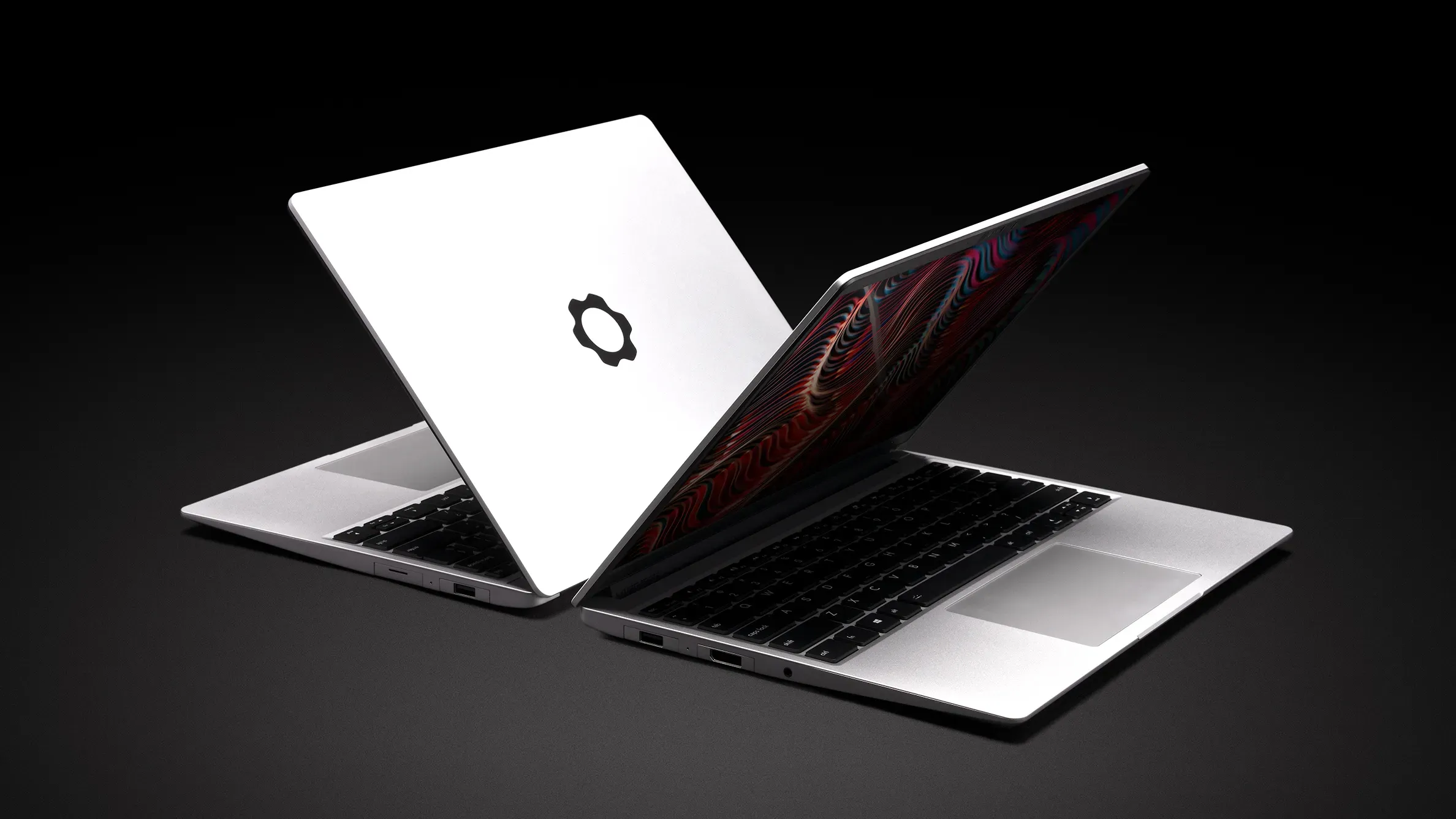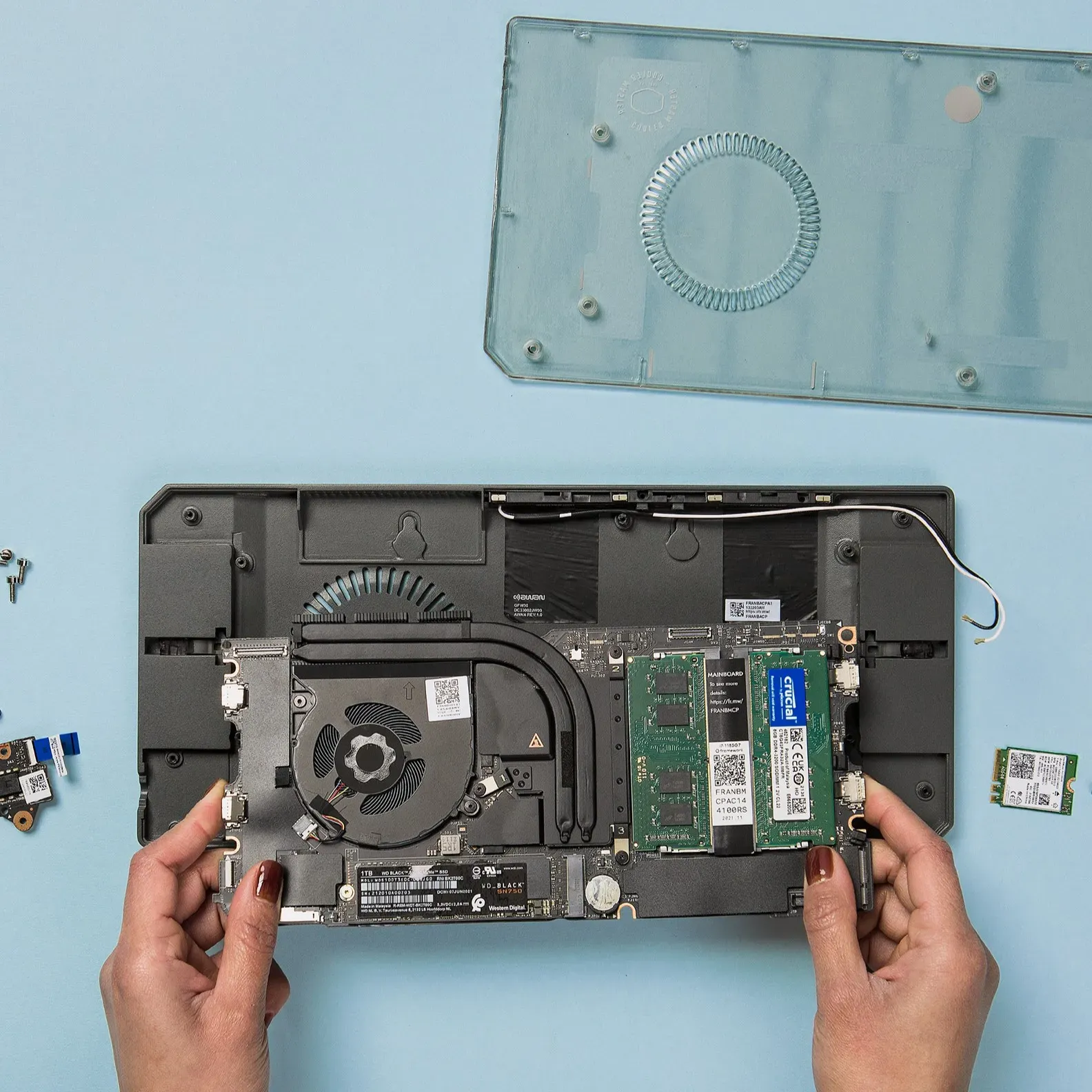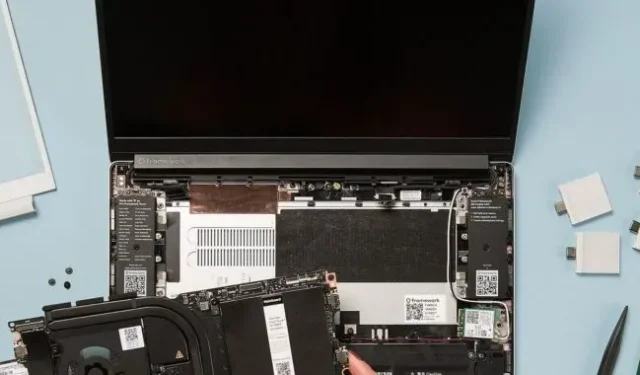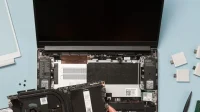For the second year in a row, Framework has announced new updates to its modular, repairable Framework Notebook, which can be installed directly into older versions of the Framework Notebook. There are two motherboards, one with a predictable upgrade from 12th Gen Intel Core processors to 13th Gen chips, and the other porting AMD Ryzen laptop processors to a Framework laptop for the first time.
Framework also officially renamed the design of their first laptop; The 13-inch model is retro-named “Framework Laptop 13″to distinguish it from the new Framework 16 gaming laptop.
We know a little more about the Intel laptop version. There are versions with 12-core (4 P-cores, 8 E-cores) Core i5-1340P and Core i7-1360P, as well as a high-end version with 14-core (6 P-cores, 8 E-cores) Core i7 -1370P. These P-series processors were partly responsible for the mediocre battery life of the latest Framework laptop, but the company says the 13th generation processors are more battery efficient and that it has done additional “firmware optimizations”to improve battery life. All Intel models continue to use DDR4-3200 memory, so when upgrading the motherboard, the RAM can be replaced along with the used SSD.
The AMD laptop version is a bit more cryptic, which is partly AMD’s fault – Framework uses Ryzen 7040 series processors, and AMD recently delayed those chips by a month. But we do know, thanks to AMD’s complex but specific new laptop processor naming scheme, that these chips will combine a Zen 4 CPU core and integrated graphics based on the latest generation AMD RDNA3 architecture, which should give the Framework Laptop 13 its first – continuous significant improvement in graphics performance. This GPU should actually make AMD’s version a passable low-end gaming laptop, especially in games that support AMD’s FSR upscaling technology.
Ryzen 5 and Ryzen 7 motherboards use DDR5-5600 memory instead of DDR4 as Zen 4 processors dropped support for DDR4. Framework also says it plans to offer official support for certain Linux distributions on AMD systems in addition to Windows 11, as it currently provides for its Intel laptops.
New laptops (as well as new motherboards) are now available for pre-order with a $100 refundable deposit. Framework says Intel models should start shipping in May. For upgraders, the motherboards are also available without a $100 deposit and will also start shipping in May. AMD versions should start shipping in the third quarter.
Other updates and sustainability

As usual, the new motherboards are designed to fit into all existing Framework 13 laptops without modification – you can directly upgrade from your original 11th gen Intel motherboard to a new AMD motherboard without changing the battery, ports, keyboard, screen, or any other components. parts if you like. But the Framework also introduces several design updates that can be purchased with the new Framework 13 or added to an older model.
First, the company is introducing a 61 Wh replacement battery that can fit in the same space as the previous 55 Wh battery thanks to “advances in lithium-ion chemistry.”That’s a relatively minor 11 percent increase in capacity, but the last Framework laptop’s battery life was its Achilles’ heel, so every little bit helps. Combined with other optimizations in the Intel 13th generation version of the laptop, the Framework says its battery life should be 20 to 30 percent better than the previous generation model.
For the display and lid, Framework is releasing both a matte version of its screen and a new set of hinges that are designed to hold the screen more securely yet still be able to be opened with one hand. The display uses the same 13.5-inch 2256×1504 display as before – there’s no improvement in contrast, color gamut, resolution or refresh rate – it just has an anti-glare matte finish instead of a glossy one.

Finally, for those upgrading, Framework and Cooler Master introduce an official $39 case that can be used to convert older Framework motherboards into small desktop PCs. Framework introduced 3D-printable open-source case designs last year to make things like this easier (and then had to change them due to legal threats from Lenovo), but the Cooler Master case is the go-to option for people who do not have access to a 3D printer. It includes a stand and a VESA mount option so you can attach it to the back of your monitor and it will be available in the spring.
“We want to ensure that with all these great updates, we don’t encourage e-waste through updates,” the company said in a press release. “We have also launched open source documentation for the display and battery modules to encourage and facilitate the development of products that reuse them.”


